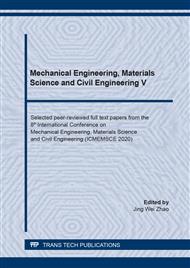p.82
p.87
p.93
p.98
p.103
p.109
p.116
p.121
p.126
Optimization of Agar Preparation Based on Transparency
Abstract:
To meet the requirement for high transparency of agar gel used in tissue culture, bacteriological applications, and high-quality cosmetics and food, this study on improving the transparency of agar products was carried out by using activated carbon for decolorization and perlite for aiding filtration. The results showed that the pre-coating filtration method was better than that of the mixed slurry filtration, so an orthogonal experiment optimization was conducted using the pre-coating filtration method based on the single factor experimental results. The experimental results showed that the optimal process conditions based on the transparency index were: concentration of agar of 1.30%, activated carbon dosage of 0.80%, processing temperature of 95 °C, and treatment time of 20 min. Agar products with gel transparency of 58.93% and blue-ray whiteness value of 93.82 could be obtained under these experimental conditions. The order of the factors influencing the decolorization ratio of agar was as follows: activated carbon dosage > concentration of agar > processing temperature > treatment time. The experimental results provided effective procession methods for the production enterprises based on transparency and increased economic benefits, and it was of practical significance.
Info:
Periodical:
Pages:
103-108
Citation:
Online since:
June 2021
Authors:
Keywords:
Price:
Сopyright:
© 2021 Trans Tech Publications Ltd. All Rights Reserved
Share:
Citation:


